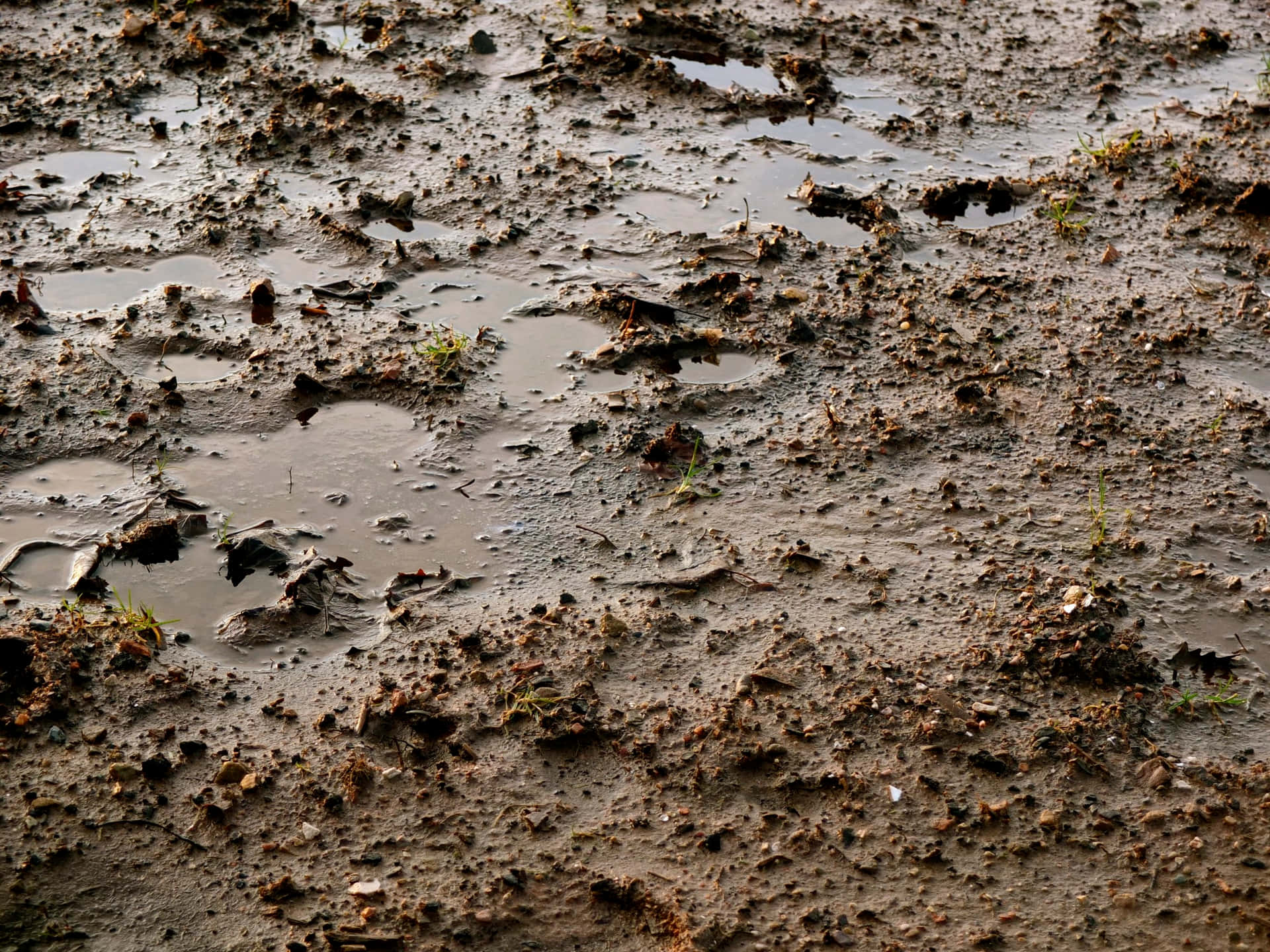Mud Flaps For Pickup Trucks: Your Ultimate Guide to Protection and Style pickup.truckstrend.com
The roar of a pickup truck engine, the thrill of open roads, and the promise of adventure – these are the hallmarks of truck ownership. But with great power comes great responsibility, especially when it comes to protecting your investment and ensuring safety for everyone on the road. Enter the humble yet indispensable mud flap. Often overlooked, these unassuming accessories play a crucial role in safeguarding your vehicle, maintaining its aesthetics, and complying with road regulations.
This comprehensive guide delves deep into the world of mud flaps for pickup trucks, exploring their importance, various types, installation processes, and essential considerations. Whether you’re a seasoned truck enthusiast or a new owner, understanding the ins and outs of mud flaps is key to a cleaner, safer, and more protected ride.
Mud Flaps For Pickup Trucks: Your Ultimate Guide to Protection and Style
The Unsung Heroes: What Are Mud Flaps and Why Are They Essential?
At its core, a mud flap (also known as a splash guard or splash apron) is a protective barrier installed behind the wheels of a vehicle, particularly pickup trucks, SUVs, and commercial vehicles. Their primary function is to catch and deflect debris – mud, rocks, water, snow, and other road grime – that is kicked up by the tires. Without them, your truck’s paintwork, undercarriage, and even your trailer would be constantly bombarded, leading to chips, scratches, and premature wear.
For pickup trucks, which often venture off-road, haul heavy loads, or simply navigate diverse terrains, mud flaps are not just an accessory; they are a necessity. They offer a multi-faceted layer of protection that extends beyond just keeping your truck clean.
The Critical Importance of Mud Flaps:
- Vehicle Protection: The most obvious benefit. Mud flaps prevent rocks and debris from sandblasting your truck’s paint, especially along the rocker panels, wheel wells, and lower body. This preserves the finish, prevents rust formation from exposed metal, and helps maintain the vehicle’s resale value.
- Undercarriage Safeguard: Beyond the visible body, mud flaps protect critical components of your truck’s undercarriage, including brake lines, suspension parts, and exhaust systems, from impact damage and corrosive road salts.
- Trailer Protection: If you frequently tow a trailer, boat, or RV, mud flaps are indispensable. They prevent debris from flying back and damaging the front of your towed unit, saving you costly repairs and repainting.
- Safety for Other Drivers: This is a crucial, often overlooked aspect. Debris kicked up by large truck tires can become dangerous projectiles for following vehicles, potentially cracking windshields or causing accidents. Mud flaps significantly reduce this risk, making roads safer for everyone.
- Legal Compliance: In many states and provinces, mud flaps are a legal requirement for pickup trucks, especially those with lifted suspensions or oversized tires. Failure to comply can result in fines. Checking local regulations is always advisable.
- Aesthetics: While primarily functional, mud flaps can also enhance the rugged or polished look of your truck. Available in various styles and finishes, they can complement your truck’s overall appearance.

Diving Deeper: Types, Materials, and Mounting Styles

The world of mud flaps is more diverse than you might imagine. Understanding the different types, materials, and mounting options is key to choosing the best fit for your truck and driving habits.
1. Types by Design and Fit:
- OEM (Original Equipment Manufacturer) Style: These mud flaps are designed specifically for your truck’s make and model, ensuring a precise, factory-like fit. They often match the contours of the wheel wells perfectly and require minimal modification for installation.
- Aftermarket Universal Mud Flaps: More versatile and typically less expensive, these are designed to fit a wide range of vehicles. They may require some trimming or drilling for a proper fit, but offer greater customization potential.
- Contoured/Molded Mud Flaps: These are custom-fit to the specific curves of your truck’s fender, offering maximum coverage and a sleek, integrated look. They are often made from rigid plastic or composite materials.
- Flat/Flexible Mud Flaps: Typically made from rubber or a rubberized composite, these are flat sheets that hang down behind the tires. They are highly durable, flexible, and excel at deflecting large amounts of mud and debris. They are common on heavy-duty and off-road trucks.
- Dually Mud Flaps: Specifically designed for dually (dual rear wheel) trucks, these are wider to accommodate the extra set of tires, providing comprehensive coverage for both wheels.

2. Common Materials:
- Rubber: The classic choice. Rubber mud flaps are highly durable, flexible, and resistant to extreme temperatures. They can withstand impacts from rocks without cracking and are often used for heavy-duty applications.
- Plastic/Thermoplastic: Lighter than rubber, plastic mud flaps can be molded into custom shapes for a more integrated look. They are resistant to corrosion and often come in various colors. However, some types can become brittle in extreme cold.
- Polymer/Composite: These materials combine the best properties of rubber and plastic, offering good flexibility, impact resistance, and durability. They are often found in premium aftermarket options.
- Aluminum/Stainless Steel: Less common for the main flap, but often used for weighted bottom plates or decorative accents on heavy-duty or custom mud flaps. They offer a premium look and added rigidity.
3. Mounting Styles:
- No-Drill Mud Flaps: As the name suggests, these utilize existing factory holes or innovative clamping mechanisms for installation, requiring no drilling into your truck’s body. This is ideal for DIYers and those concerned about vehicle modification.
- Drill-On Mud Flaps: These require drilling new holes into the fender well for secure attachment. While more involved, they often provide a more robust and permanent installation, particularly for heavy-duty or off-road applications.
- Universal Mounts: Often used with flat mud flaps, these involve brackets that attach to the fender lip or frame, allowing the mud flap to hang freely.
Practical Advice: Choosing and Installing the Right Mud Flaps
Selecting the perfect set of mud flaps involves more than just picking the cheapest option. Consider these factors to ensure you get the best protection and value.
Choosing the Right Mud Flaps:
- Vehicle Specificity: Always prioritize mud flaps designed specifically for your truck’s make, model, and year. This ensures the best fit and easiest installation.
- Driving Conditions:
- Mainly Highway: Molded plastic or contoured flaps offer a clean look and sufficient protection.
- Off-Road/Construction: Heavy-duty rubber or flexible composite flaps are crucial for absorbing impacts and enduring harsh conditions. Consider a larger size for maximum coverage.
- Towing: Opt for wider, longer flaps to protect your trailer effectively.
- Tire Size: If you have oversized tires, ensure the mud flaps are wide and long enough to cover the entire tread width and extend sufficiently below the axle.
- Aesthetics: Decide if you prefer a subtle, integrated look (molded) or a more rugged, utilitarian appearance (flat rubber). Many brands offer various finishes and even customizable logos.
- Budget: Mud flaps range from affordable universal sets to premium custom-fit options. Set a budget but remember that quality often correlates with durability and protection.
- Installation Preference: Do you prefer a quick, no-drill installation, or are you comfortable with drilling for a more secure fit?
General Installation Guide (DIY Friendly):
While specific instructions vary by product and truck model, here’s a general outline for installing mud flaps:
Tools You’ll Likely Need:
- Socket wrench set or drill with appropriate bits
- Phillips head screwdriver
- Measuring tape
- Marker or pencil
- Clean rags
- Rubbing alcohol (for cleaning surfaces)
- Safety glasses
- Jack and jack stands (optional, for easier access)
Steps:
- Preparation: Park your truck on a flat, level surface and engage the parking brake. If lifting the truck, use jack stands for safety. Clean the area around the fender wells where the mud flaps will attach. Remove any existing mud or debris.
- Positioning: Hold the mud flap in place against the fender well. For custom-fit flaps, align them with the pre-drilled holes or contours. For universal flaps, determine the optimal position for maximum coverage without interfering with tire movement.
- Marking (for drill-on): If drilling is required, use a marker to precisely mark the spots where new holes need to be drilled, using the mud flap’s holes as a template. Double-check your measurements and alignment.
- Drilling (for drill-on): Carefully drill pilot holes at the marked locations. Start with a smaller bit and gradually increase to the required size. Be mindful of any wiring or components behind the fender.
- Attachment:
- No-Drill: Secure the mud flap using the provided clips, clamps, or fasteners that utilize existing factory holes.
- Drill-On: Attach the mud flap using the supplied screws, bolts, or rivets. Ensure a snug fit but avoid overtightening, which could crack the material.
- Repeat: Follow the same steps for the remaining mud flaps.
- Final Check: Once all mud flaps are installed, check their stability. Turn the steering wheel lock-to-lock (for front flaps) to ensure there’s no rubbing or interference with the tires during turns or suspension compression.
Maintenance, Challenges, and Solutions
Mud flaps are designed to take a beating, but a little care can extend their lifespan and effectiveness.
Maintenance and Care Tips:
- Regular Cleaning: Wash your mud flaps regularly, especially after off-roading or driving in salty conditions. This prevents dirt and salt buildup from degrading the material or fasteners.
- Check Fasteners: Periodically inspect the mounting hardware. Vibrations and impacts can loosen screws or bolts. Tighten them as needed to prevent the flaps from falling off.
- Inspect for Damage: Look for cracks, tears, or excessive wear. Damaged mud flaps are less effective and might need replacement.
- Winter Care: In cold climates, snow and ice can accumulate on mud flaps. Gently remove buildup to prevent excessive weight or damage to the flaps.
Common Challenges and Solutions:
- Tire Rubbing/Clearance Issues:
- Challenge: Mud flaps rubbing against tires, especially during turns or when the suspension compresses, often due to oversized tires or insufficient clearance.
- Solution: Ensure you’ve chosen flaps appropriate for your tire size. You might need to trim the bottom or sides of the mud flap, or consider a different mounting position that allows more clearance. Some aftermarket options are designed with extra clearance in mind.
- Difficulty with Drilling:
- Challenge: Hesitation or difficulty drilling into the truck’s body.
- Solution: Opt for "no-drill" mud flaps. If drilling is unavoidable, use sharp drill bits, start with pilot holes, and use painter’s tape to prevent the drill from slipping. Consider professional installation if you’re uncomfortable.
- Damage from Off-Roading:
- Challenge: Mud flaps getting torn off or damaged by rocks, stumps, or deep ruts.
- Solution: For serious off-roaders, flexible rubber mud flaps are best as they can bend and deform without breaking. Some off-road specific mud flaps have breakaway designs or quick-release mechanisms to prevent damage.
Mud Flaps For Pickup Trucks: Price Table
Please note that prices are approximate and can vary significantly based on brand, material quality, specific vehicle fit, and retailer. Installation costs (if professional) are not included.
| Mud Flap Type/Category | Material Type | Key Features | Price Range (USD per pair/set of 4) | Typical Application |
|---|---|---|---|---|
| Basic Universal Flat | Rubber, PVC | Economical, cut-to-fit, flexible, simple design | $20 – $50 | General protection, light-duty, older trucks, DIY |
| Custom-Fit Molded | Thermoplastic, ABS Plastic | Vehicle-specific contour, no-drill options, integrated look, rigid | $50 – $150 | Daily drivers, modern trucks, aesthetics, easy install |
| Heavy-Duty Flat/Flexible | Thick Rubber, Poly-Blend | Extreme durability, impact resistant, often wider/longer, commercial-grade | $70 – $200 | Off-road, towing, construction, commercial fleets |
| Premium Performance | High-Density Polyethylene, | Superior flexibility & rigidity, often branded, enhanced aesthetics | $150 – $300+ | Enthusiasts, lifted trucks, custom builds, extreme conditions |
| Dually Specific | Rubber, Composite | Extra wide for dual rear wheels, heavy-duty construction | $100 – $250 | Dually trucks, heavy hauling, commercial use |
| Accent/Weighted | Stainless Steel, Aluminum | Bottom weights, polished finish, added rigidity, decorative | $30 – $80 (add-on to existing flaps) | Customization, show trucks, enhanced durability |
Note: Some premium brands or specialized applications (e.g., rally-style flaps) can exceed these price ranges.
Frequently Asked Questions (FAQ) About Mud Flaps For Pickup Trucks
Q1: Are mud flaps legally required for pickup trucks?
A1: It depends on your location. Many states and provinces have laws regarding splash guards, especially for trucks with lifted suspensions or oversized tires. Always check your local Department of Motor Vehicles (DMV) or equivalent authority for specific regulations in your area.
Q2: Do mud flaps affect fuel economy?
A2: While technically adding a small amount of drag, the effect of mud flaps on fuel economy is generally negligible for most pickup trucks. The protection they offer far outweighs any minimal impact on MPG.
Q3: Can I install mud flaps myself, or do I need a professional?
A3: Many mud flap kits, especially "no-drill" or custom-fit options, are designed for DIY installation and come with detailed instructions. If you’re comfortable with basic tools, you can likely do it yourself. However, if you’re installing drill-on flaps and are hesitant about drilling into your truck, or if you encounter complex fitment issues, professional installation is a good option.
Q4: What’s the best material for mud flaps?
A4: The "best" material depends on your needs.
- Rubber: Best for heavy-duty use, off-roading, and extreme temperatures due to its flexibility and durability.
- Plastic/Thermoplastic: Great for a custom, integrated look and corrosion resistance, suitable for daily drivers.
- Composite/Polymer: A good all-around choice offering a balance of flexibility, rigidity, and impact resistance.
Q5: Will mud flaps protect against rust?
A5: Yes, indirectly. By preventing rocks and debris from chipping your truck’s paint, mud flaps help prevent exposed metal from rusting. They also reduce the amount of corrosive road salt and grime that accumulates on your undercarriage.
Q6: Do mud flaps interfere with off-roading?
A6: Some larger or rigid mud flaps can get caught on obstacles during extreme off-roading. For serious off-roaders, flexible rubber mud flaps are recommended, or consider designs that can be easily removed or have a breakaway feature. Proper clearance should always be checked.
Q7: How long do mud flaps typically last?
A7: With proper care, good quality mud flaps can last for many years. Factors like driving conditions, material quality, and exposure to harsh elements (e.g., road salt, extreme UV) will influence their lifespan. Regular inspection and cleaning will help them last longer.
Conclusion: A Small Investment for Big Protection
Mud flaps for pickup trucks are far more than just aesthetic additions; they are a vital component of vehicle protection, safety, and legal compliance. From shielding your truck’s pristine paintwork from abrasive road debris to safeguarding fellow motorists from flying rocks, their benefits are undeniable.
By understanding the various types, materials, and installation considerations, you can make an informed decision that perfectly matches your truck’s needs and your driving lifestyle. Whether you opt for sleek, custom-fit molded flaps or rugged, heavy-duty rubber, the investment in quality mud flaps pays dividends in vehicle longevity, reduced maintenance costs, and enhanced peace of mind on every journey. So, equip your pickup with these unsung heroes, and drive confidently, knowing your truck and those around you are well-protected.


